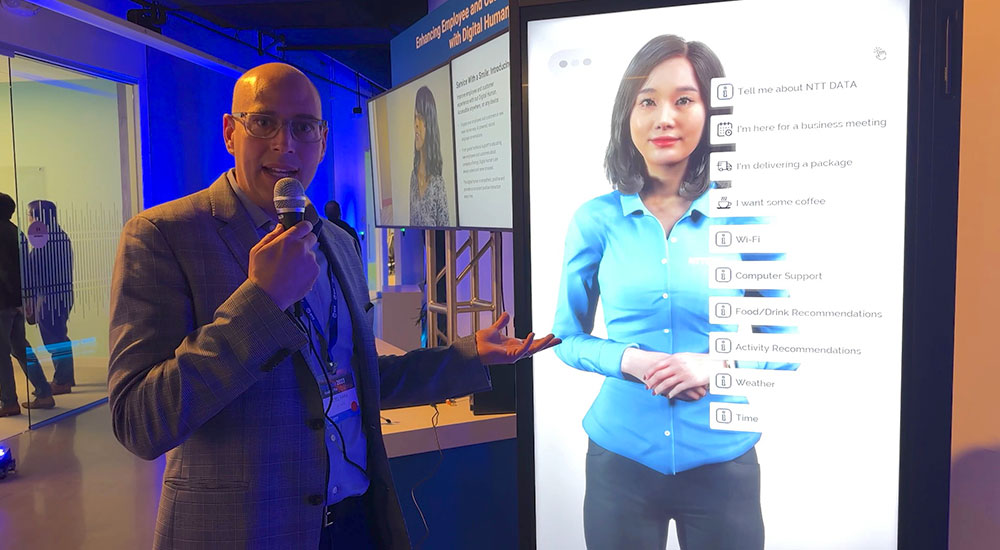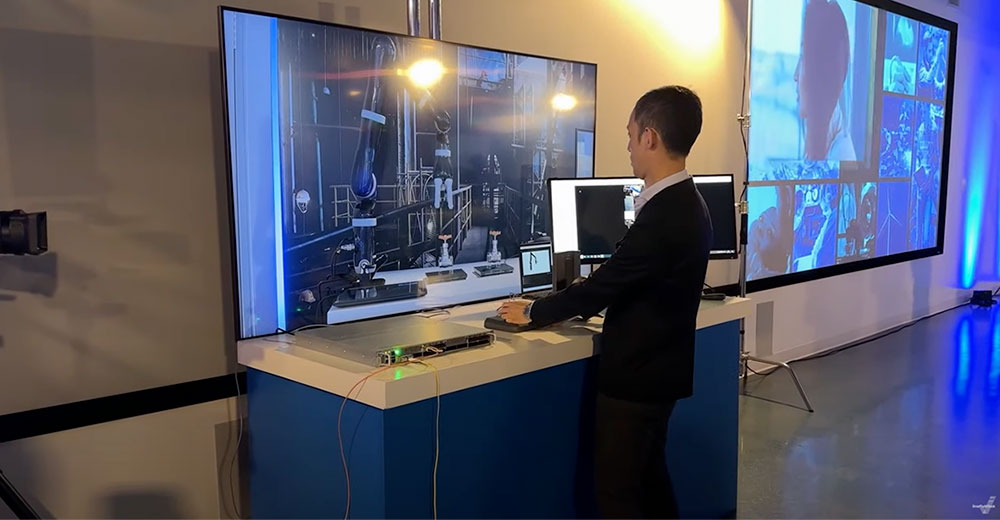NTT Research, a branch of conglomerate parent firm NTT, last week announced that it would expand the size of its optical research center by 2023.
During its Upgrade 2023 event, the company’s technical user, customer, and partner conference in San Francisco, NTT proffered an expansive view of how it believes networking infrastructure must change. NTT is the master corporate entity in Japan that its research arm operates under.
The NTT announcement does beg the question for tech industry neophytes who don’t spend their free time hanging around optical research facilities, what precisely does an optical research facility do?
Without diving deeper into the technical elements and advanced mathematics involved in this type of research, the work’s potential practical applied benefits could have a revolutionary impact on network communication technology as we know it.
NTT’s work in this area dovetails into the company’s announcement earlier this month that it would start offering corporate clients its initial services utilizing an optical technology-based next-generation infrastructure. NTT announced at the Upgrade 2023 event that it would charge a monthly fee of US$15,000 per month (approximately 1.98 million yen) to customers via its regional entities, Nippon Telegraph and Telephone East and Nippon Telegraph and Telephone West.
This initiative, known as IOWN (Innovative Optical and Wireless Network), facilitates breakthrough “low latency” of the new infrastructure system or dramatically decreases transmission time lags. The result is one-200th of the relevant delays compared to conventional optical communication systems.
In 2019, NTT seeded the idea of IOWN, which involves employing optical signals all along the communication line to deliver data from the transmitter to the destination. NTT hopes that its IOWN services, which it will primarily offer to business clients, will be beneficial in various use cases, including self-driving.
Benefits of the IOWN Initiative
Fiber is the primary means of data transmission for existing optical communications widely employed in everyday residential settings. In the communication path, optical impulses must still be converted to electric signals and vice versa, which results in latency or time delays. These delays may be significantly decreased by IOWN, eliminating the need for signal transcoding.
There are a variety of applications that could exploit this capability. Self-driving cars, remotely operated robots, digital humans, and remote surgical procedures conducted in distant areas might benefit from the low latency that distinguishes IOWN services.

Digital human interaction technology demonstration at NTT Upgrade 2023
At Upgrade 2023, a compelling demo (pictured above) was shown with a robotic arm being used via controllers to move items in a simulated warehouse setting that required tremendous precision with virtually zero latency.
To use the IOWN services, customers must use specialized terminal devices marketed by Nippon Telegraph and Telephone East and Nippon Telegraph and Telephone West.
Low latency is not the only benefit provided by the IOWN initiative. The IOWN project also aims to achieve low power consumption with a 100-times improvement in electrical efficiency over current optical communication systems and a 125-times improvement in transmission capacity.
NTT is making a massive commitment to IOWN as it believes its revolutionary benefits will disrupt the networking infrastructure space. Over the coming years, NTT will work to create specific terminal devices and communications technology to achieve those goals. NTT anticipates implementing the entire IOWN plan in the 2030 timeframe.
Partners Build Credibility for the IOWN Initiative
The IOWN initiative now includes many well-known businesses from inside and outside Japan. As NTT would like to see IOWN attract as broad international support as possible, a worldwide forum has been created for evaluating IOWN’s requirements and other technical specifics.
Earlier this month, KDDI Corporation, another major Japanese telecommunications company, was announced as a new member of the international forum by NTT. The company seeks to collaborate with competing businesses to promote the rapid expansion of the IOWN platform.
NTT has also confirmed that it has created a prototype chip that it hopes may one day significantly increase data transmission rates in data centers and underwater fiber optic cables.
According to NTT, its brand-new, small baseband amplifier integrated circuit module offers an ultra-broadband performance of 100 GHz. It will be used with emerging all-photonics network technologies, such as future 6G networks and the IOWN infrastructure. This aspect is a crucial component of those future networks, according to NTT, because they will need ultra-broadband signal amplification capabilities to remove all noise distortion.
IOWN core optical networks will be able to transmit data at rates of more than two terabits per second; however, they need a baseband amplifier IC module to amplify the signal. NTT had previously created products that could accomplish this, but they were all large and required connection to products with external data center block pieces. NTT has now created a prototype of its module that is tiny enough to fit into any device.
Although the device won’t be commercially available for several years, NTT claims it can magnify a 100 GHz electrical signal, a dramatic improvement over what is possible with today’s technology. NTT believes progress will eventually increase data center connection speeds and speed up customer internet access.
Analyst Thoughts
Though NTT is not a company broadly known outside of Japan, the 150-year-old company has a cultural penchant for asking questions about the future. With its IOWN initiative, it seems to be challenging the industry to drastically rethink the future computer requirements 25 years from now.
It’s clear that for NTT, photonic optical technology is where the puck appears to be going to optimize the conveyance of data. My recent interview with NTT’s Global Chief Marketing Officer, Vito Mabrucco, underscores the commitment that the company is making to photonics:
It is helpful to recall that most technology today relies on electronics to convey and analyze information. In the post-Moore’s Law era, NTT is taking the bold step to push the tech industry to consider how it can increase computing power without some of the transistor development techniques that have spanned the last fifty years. From NTT’s perspective, photonics promises to accelerate data transmission speeds, enhance machine responsiveness, and utilize significantly less energy.
Moreover, the positioning of this technology is around the transition from electronics to photonics. The same premise holds in the cellular market as 6G will ultimately eclipse 5G to enable future internet and cloud usage models (some not even contemplated). Massive data gathering with almost zero latency will be possible in environments with specialized photonics-based processors that can switch workloads autonomously.
Undoubtedly, a fully actuated IOWN-based world will take time and significant investment dollars to realize. Typically, new technological advances come at the expense of performance or energy utilization tradeoffs, but this does not appear to be the case with IOWN. The payoff will be a new game-changing networking topology that can improve how people use all kinds of information and how society functions.
Even at that ambitious level, NTT deserves credit for articulating a bold, new network infrastructure vision that changes the very nature of computing.

























































